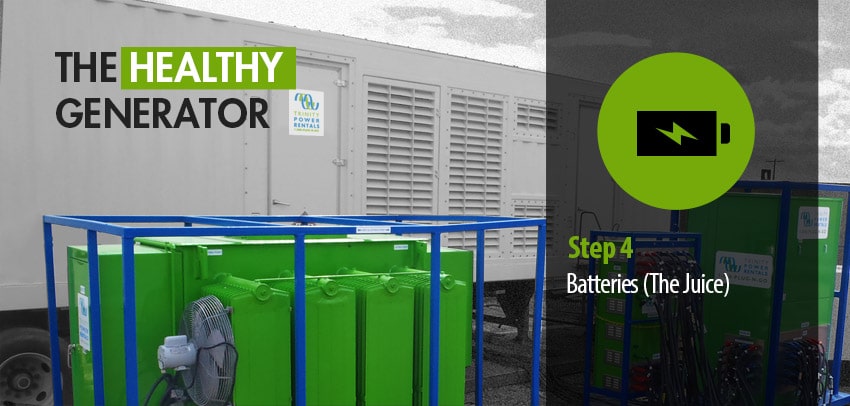- OUR APPROACH
-
COMMITTED TO YOUR SUCCESS
Our approach, developed over decades of experience, is fine-tuned to get the results you want.
We deliver concept-to-completion solutions, designed by temporary power specialists with access to the largest inventory of high-quality power generation and distribution equipment in North America.
-
- Equipment
-
RENTALS
From a wide range of diesel and natural gas generators to transformers, cable, light towers and more, our large rental fleet and extensive vendor network ensure we’ll have the temporary power equipment that your project requires — every time.

-
- Industries
-
INDUSTRIES WE SERVE
For nearly 20 years, we have been at work powering projects across Canada’s industrial sectors.
Select from this sampling of industries to learn how we can put our expertise to work for you.
VIEW ALL- Projects
- About
-
A PROUD HISTORY. A BRIGHT FUTURE.
From our inception in 1998, we have been building our team on a foundation of excellence. Our team members’ passion, expertise and commitment are what have allowed us to grow into a national company with projects across Canada.
Click on the links to learn more about our history, our team or our career opportunities.
- Blog
- Contact
-
What’s the next disruptor in battery tech, and what are the commercial implications for your business? This cnet.com article summarizes pretty well why the basic tech involved with making the Lithium-ion battery in your 2015 smartphone hasn’t changed substantially since the 1980s. Batteries are both a major driver of our rapid technological advancement, as well as its biggest inhibitor. The issues are manifold: cost, renewability/rechargeability, portability, and safety. Many of the battery improvements in consumer devices and the majority of current commercial, industrial and military applications are from clever software management and product or component design, not new battery tech.
If you follow the money, most of the big R&D in energy storage technology is going into cars and power grids. A recent Bloomberg article notes that the U.S. $50 billion-a-year battery industry is growing—with Bill Gates and Elon Musk throwing big bucks into new battery tech and startups, and increasing investment and interest from international electronics firms, car manufacturers and governments. Applications include energy storage for solar and wind farms and microgrids and as a greener replacement for generators and fossil fuels in conventional power grids.
According to the Global Trends In Renewable Energy Investment 2014: Key Findings report, from the UNEP and Bloomberg Finance renewable energy, continues to build its share of the global electricity market; excluding large hydro projects, renewables accounted for 43.6% of the new generating capacity installed worldwide in 2013, raising its share of world electricity generation from 7.8% in 2012 to 8.5%, partly buoyed by the dropping cost of PV(Photovoltaics) technology. With healthy government support at the federal and provincial/state levels, renewable energy investment and use in Canada and the U.S. is rising. However, major sticking points with converting to non-hydro renewable energy generation continue to be issues related to excess energy storage, and grid integration.
Aside from old-school versions of NiCd (Nickel Cadmium), NiMH (Nickel Metal Hydride) and Li-ion (Lithium Ion) battery technology currently in use, there are plenty of new battery technologies being developed, among them liquid metal tech from Ambri and sodium-ion tech (saltwater batteries) from Aquion.
When should you start thinking about investing in alternative energy storage technology options for your business—an investment that promises to deliver long-term savings to you, your client and the environment? The good news is that although some pundits hailed 2014 as the year of major battery breakthroughs, the commercial viability of any new battery tech is at least a year or two away. That’s enough of a heads-up to start monitoring trends now, so you can decide the near future that will work for your clients and your bottom line.
Trinity Power had a look at what’s out there—here are three energy storage technology options close to commercialization that are getting a big share of the buzz today:
Lithium-ion: This industry workhorse has life in it yet, but with a new spin: newer ventures focus not just on achieving economies of scale, as is the case with Tesla’s mass production investment (Tesla’s Li-ion “gigafactory” is slated to open its doors in 2016, manufacturing batteries not just for cars, but for homes), but in achieving higher efficiency from the battery technology itself with a more efficient electrolyte solution or replacing the graphite with new materials that drastically decrease charging times (70% charge in 2 minutes), and increase battery lifespan by up to 20 years.
The scoop: What are some of the potential advantages over, say, lead-acid batteries for storing/releasing energy? PV Magazine lists lower weight and size; discharge inefficiencies above 90 percent and high discharge rate capability; the ability to remain at any SOC, for any length of time, without accelerated degradation; low self-discharge rate; and a high cycle life. This technology is technically available right now, but commercialization of the tweaked tech is likely at least two years away. Li-ion costs have already gone down considerably since that article was posted; as predicted by the McKinsey Quarterly, the emergence of inexpensive energy storage could enable the wider use of distributed generation and increase the range and scope of available temporary power solutions.
Aluminum-air: “Just add water”—that’s the promise of this new metal-air battery technology, which generates electricity from the reaction of oxygen and metal using water as an electrolyte. A standard aluminum-air reaction consumes the aluminum anode, an obstacle to rechargeability; but both “Fuji Pigment” and “Phinergy” have developed an Al-air battery that suppresses corrosion and reaction byproducts, and that can be recharged multiple times by adding water.
The scoop: The commercialization target for Fuji Pigment is the end of 2015; meanwhile, Renault is slated to use Phinergy’s Al-air batteries in their next-gen Renault EVs. A realistic timeline would be deployment within the next 2–5 years. Applications for this type of battery include stationary energy storage; potential advantages include significantly greater energy output for the size and weight, and super-easy recharging (as long as water’s handy).
The cost? This ExtremeTech article cites analysts’ estimates (for the auto industry) to be at roughly $1.1 per kg of aluminum anode, or in the same cost range as conventional internal combustion engines with proper recycling.
Solid-state: A buzzword even in the electronics manufacturing industry (solid-state drives are today’s big thing), solid-state battery technology is exactly that—no liquid electrolyte, using a “dry electrolyte” or solid substrate instead.
The scoop: Though still in the ballpark of 2–5 years out, manufacturers like Sakti3 (solid electrode, solid substrate) promise half the size, twice the performance, and less weight than a conventional Li-ion battery; the manufacturer claims the battery is prismatic (stackable) and performs very well at higher temperatures, and with no flammable liquids, there’s literally nothing to “blow up.” Sakti3 has already announced a partnership with Dyson, and if that goes well, might move its product from vacuums to cars and other applications. Another contender in the solid-state category is Seeo, whose DryLyte™ technology has investors like electronics heavyweight Samsung, and was recently awarded a USABC contract for battery module testing. Advantages as an energy storage solution include robust calendar and cycle life; high system-level roundtrip efficiency; durability at high temperatures; scalable modular form factor; and small footprint, reducing transportation and siting costs. What type of cost might be involved? A Fortune article cites “…double the energy density of today’s lithium-ion technology at one-fifth the cost.”
The most likely outcome? A “one size fits most” scenario: a single technology may be in more widespread use (the candidate with the most potential could be a more efficient, lower cost, safer li-ion battery, given existing usage trends), but a variety of new battery technology options trumping their predecessors in cost and performance, will be available for the applications they’re most suited for. Some big brands and angel investors have thrown their support behind specific battery tech, but the top investors and watchdogs are still hedging their bets—and there are plenty of alternative energy storage technology startups you can follow.
What do you think will win the new battery wars? Post your comments on our Facebook page.
Related Articles
Subscribe for access to exclusive content
"*" indicates required fields




















